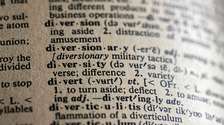Adverbs are easily confused with adjectives. Often times, adverbs can be derived from similar adjectives and the usage of adverbs can be both simple and complex at the same time. So, what exactly is an adverb? Do we need to use adverbs often or sparingly? And should we ever try to avoid using adverbs?
In this article, I will discuss the history of adverbs and offer some advice on using them in sentences. We will also examine the difference between an adverb and an adjective. The main point of this article is to ensure that your written and spoken English is clear and understandable to your audience.
The history of adverbs
Adverbs came into existence in late Middle English. The word adverb has its roots in the Latin language. The Latin word Adverbium has two parts that describe how an adverb works. The ad- part of adverbium means to add something and the second part of the word is based on the Latin word Verbum.
Verbum means “word” or “verb” in Latin. So, by using an adverb, we are effectively adding a word to a sentence.
What’s the difference between an adjective and an adverb?
In sentences, an adjective is used to add a quality to a noun. An adjective will normally come before a noun in a complete sentence. In the following examples, there are no adjectives:
Sentence one: She was a woman.
Sentence two: He drove a car.
In sentence one, the noun is “woman,” whereas in sentence two, the noun is “car.” By using adjectives, we can add more detail and give qualities to our nouns. For instance, we can modify these two sentences with adjectives as follows:
- She was a beautiful woman.
- He drove an expensive car.
As you can see, we have now transformed two very plain and utilitarian sentences into something more descriptive. Essentially, when writing and speaking in English, adding such detail to sentences through the use of adjectives and adverbs makes your message clearer and more interesting.
Similarly, adding an adverb to a sentence also modifies its meaning. It allows us to express the degree, manner, place and timing of an action in more detail.
If we go back to example sentence one, we can add an adverb to express the degree of the woman’s beauty:
- She was a fascinatingly beautiful woman.
We can also use an adverb to express in what manner the action was performed. For instance, in sentence two, we can describe the way someone drove their car:
- He deftly drove an expensive car.
Let’s take a look at another example. In the following sentence, there is no mention of where the action is taking place:
- I’ve met you before.
However, by adding an adverb, we can make a reference to the possible location of this action:
- I’ve met you somewhere before.
We can also use an adverb to express an action’s timing. For example, here is a sentence that does not have an adverb:
- I will contact you.
Let’s now add an adverb in order to give the person an idea of when we will contact them:
- I will contact you soon.
Changing an adjective into an adverb
A lot of adjectives can be changed into adverbs. The main rule is to add the suffix -ly to the adjective, as in the following examples:
- mad becomes madly.
- deep becomes deeply.
- sad becomes sadly.
In one of our previous example sentences, we transformed the adjective fascinating into the adverb fascinatingly by adding the suffix -ly.
However, there are exceptions to this rule. If your adjective ends with double l, for example, just add a single y:
- full becomes fully.
Most adjectives that end with -y are regular, but check your dictionary if you are unsure or if the word does not look correct.
Does your sentence need an adverb?
An adverb is a word or phrase that can alter an adjective, verb, or even another adverb. This can be done to varying degrees in simple or more complex sentences. As an example, let’s consider the following sentences:
- I ran home to collect my mail.
- I thought about the matter before I made my decision.
Within these two sentences, we can place adverbs to add more detail:
- I quickly ran home to collect my mail.
- I thought deeply about the matter before I made my decision.
When deciding whether to add an adverb to a sentence, try to consider if an adverb is actually needed in the sentence.
In the first sentence, “I ran home to collect my mail,” do we really need to add “quickly”? If someone has already said that they ran to a place, would we really need to explain that their running was quick? Would this not be obvious from looking at the existing context in the sentence?
However, in the second sentence, “I thought deeply about the matter before I made my decision,” the adverb was a good addition to the sentence. It is easier to imagine the speaker coming to good decision if he/she was thinking deeply about the issue.
Finally, one last thing to keep in mind is that the addition of an adverb is dependent on who you are speaking with or writing to. A poet will use many adverbs, while a road sign will use few, if any. Essentially, the best advice is to consider your audience at all times and to add or omit adverbs as you see fit.
Image Sources
Hero Image by Quinn Dombrowski (CC BY-SA 2.0)







